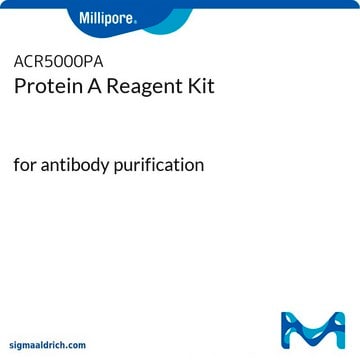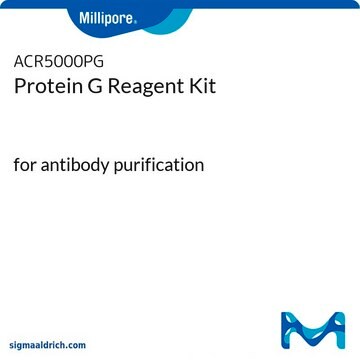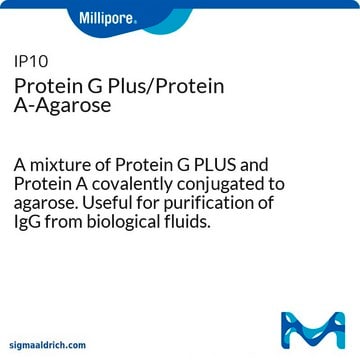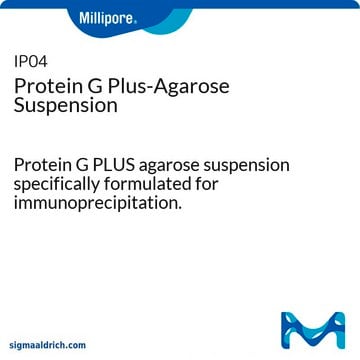PURE1A
Protein A Antibody Purification Kit
sufficient for 10 purifications
About This Item
Productos recomendados
usage
sufficient for 10 purifications
shipped in
wet ice
storage temp.
2-8°C
General description
Specificity
Human IgG 20-25 mg
Mouse IgG1 8-12 mg
Mouse IgG2a 10-15 mg
Mouse IgG2b 6-10 mg
Mouse IgG3 15-20 mg
Rabbit IgG 8-12 mg
Goat IgG 2-4 mg
Bovine IgG 8-12 mg
Application
Features and Benefits
- High capacity - purify up to 8 mg of mouse IgG or 25 mg of human IgG per column run
- Specific - will only bind IgG
- Easy to use - antibody is eluted and desalted in a single step, ready to use
- Gentle - avoids prolonged exposure of the antibody to low pH
Principle
Solo componentes del kit
- Binding Buffer 225 mL
- Desalting Cartridge 1 ea
- Elution Buffer 75 mL
- HEPES Buffer 225 mL
- 5 ml Syringe 1
- 10 ml Syringe 1
- Protein A Cartridge 1 mL
- Regeneration Buffer 75 mL
related product
signalword
Danger
hcodes
Hazard Classifications
Acute Tox. 4 Oral - STOT SE 1
Storage Class
6.1C - Combustible acute toxic Cat.3 / toxic compounds or compounds which causing chronic effects
flash_point_f
Not applicable
flash_point_c
Not applicable
Certificados de análisis (COA)
Busque Certificados de análisis (COA) introduciendo el número de lote del producto. Los números de lote se encuentran en la etiqueta del producto después de las palabras «Lot» o «Batch»
¿Ya tiene este producto?
Encuentre la documentación para los productos que ha comprado recientemente en la Biblioteca de documentos.
Los clientes también vieron
Protocolos
Antibody purification protocols yield preparations containing endogenous IgG alongside specific antibodies.
Nuestro equipo de científicos tiene experiencia en todas las áreas de investigación: Ciencias de la vida, Ciencia de los materiales, Síntesis química, Cromatografía, Analítica y muchas otras.
Póngase en contacto con el Servicio técnico












